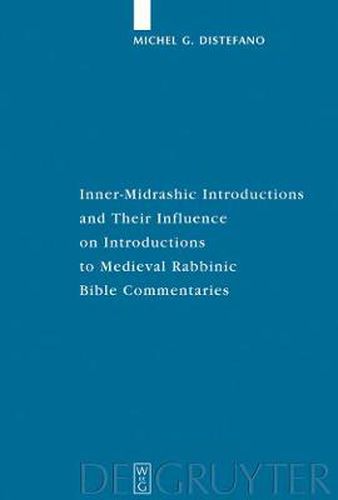Readings Newsletter
Become a Readings Member to make your shopping experience even easier.
Sign in or sign up for free!
You’re not far away from qualifying for FREE standard shipping within Australia
You’ve qualified for FREE standard shipping within Australia
The cart is loading…






This title is printed to order. This book may have been self-published. If so, we cannot guarantee the quality of the content. In the main most books will have gone through the editing process however some may not. We therefore suggest that you be aware of this before ordering this book. If in doubt check either the author or publisher’s details as we are unable to accept any returns unless they are faulty. Please contact us if you have any questions.
The opening sections of some exegetical Midrashim deal with the same type of material that is found in introductions to medieval rabbinic Bible commentaries. The application of Goldberg’s form analysis to these sections reveals the new form Inner-Midrashic Introduction (IMI) as a thematic discourse on introductory issues to biblical books. By its very nature the IMI is embedded within the comments on the first biblical verse (1:1). Further analysis of medieval rabbinic Bible commentary introductions in terms of their formal, thematic, and material characteristics, reveals that a high degree of continuity exists between them and the IMIs, including another newly discovered form, the Inner-Commentary Introduction . These new discoveries challenge the current view that traces the origin of Bible introduction in Judaism exclusively to non-Jewish models. They also point to another important link between the Midrashim and the commentaries, i.e., the decomposition of the functional form midrash in the new discoursive context of the commentaries. Finally, the form analysis demonstrates how larger discourses are formed in the exegetical Midrashim.
$9.00 standard shipping within Australia
FREE standard shipping within Australia for orders over $100.00
Express & International shipping calculated at checkout
This title is printed to order. This book may have been self-published. If so, we cannot guarantee the quality of the content. In the main most books will have gone through the editing process however some may not. We therefore suggest that you be aware of this before ordering this book. If in doubt check either the author or publisher’s details as we are unable to accept any returns unless they are faulty. Please contact us if you have any questions.
The opening sections of some exegetical Midrashim deal with the same type of material that is found in introductions to medieval rabbinic Bible commentaries. The application of Goldberg’s form analysis to these sections reveals the new form Inner-Midrashic Introduction (IMI) as a thematic discourse on introductory issues to biblical books. By its very nature the IMI is embedded within the comments on the first biblical verse (1:1). Further analysis of medieval rabbinic Bible commentary introductions in terms of their formal, thematic, and material characteristics, reveals that a high degree of continuity exists between them and the IMIs, including another newly discovered form, the Inner-Commentary Introduction . These new discoveries challenge the current view that traces the origin of Bible introduction in Judaism exclusively to non-Jewish models. They also point to another important link between the Midrashim and the commentaries, i.e., the decomposition of the functional form midrash in the new discoursive context of the commentaries. Finally, the form analysis demonstrates how larger discourses are formed in the exegetical Midrashim.